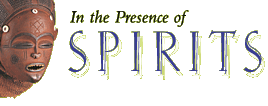




|
The Chokwe, Lwena, Luchazi, Lwimbi, Songo and Ovimbundu peoples of Angola, the Democratic Republic of the Congo and Zambia have related histories, cultural traits and cosmologies, which they embed in distinct ways in a shared visual vocabulary.
According to some accounts, the groups derive from a shared ancestry, when, in the late 1500s or early 1600s, a Lunda senior chief, named either Yala Muaku or Konde, opted to appoint his daughter Lweji, as his successor. His two sons, Chinguli and Chinyama, left the court upset and, with their followers, migrated to other territories, conquering and intermarrying with other peoples. Their settlements and those established by their descendants eventually engendered distinct ethnicities, including the Chokwe, Lwena, Luchazi, Lwimbi and others. Around 1887 the Chokwe invaded the court of the dominant Lunda, under whose well-organized institution of kingship the Chokwe and others had lived. Shortly after, the Lunda regained their capital, while the Chokwe retained parts of the Lunda territories and established themselves as the majority population in areas west of that capital. By sculpting numerous symbols of power and prestige, the Chokwe used art as a strategy to claim their chiefs share of royal lineages. |